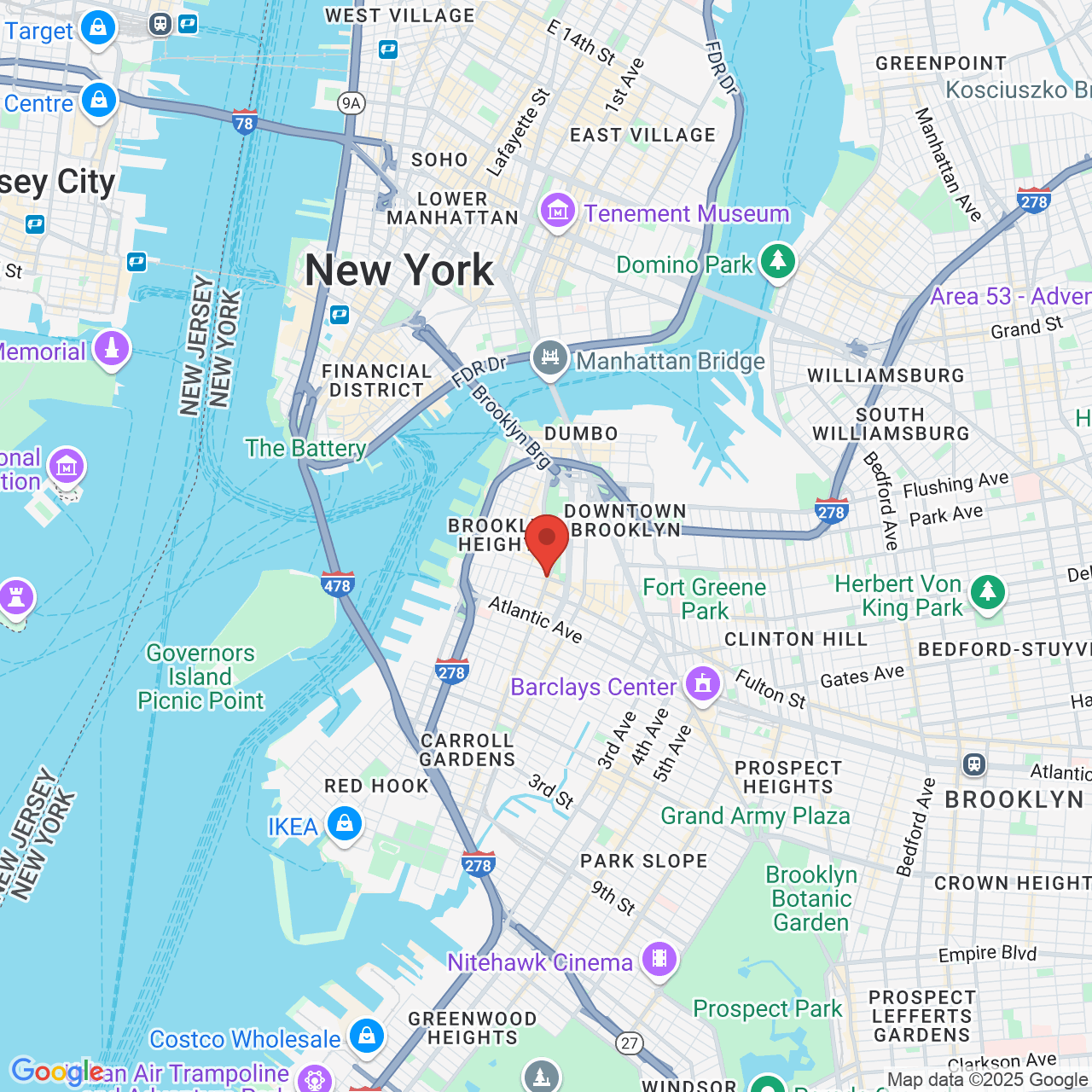Find Relief with Surgical Treatment for TMJ
 Temporomandibular joint (TMJ) disorder is a condition that affects the movement of the jaw but can cause a whole range of symptoms including pain when eating, headaches, neck pain, and a clicking sound when opening and closing the mouth.
Temporomandibular joint (TMJ) disorder is a condition that affects the movement of the jaw but can cause a whole range of symptoms including pain when eating, headaches, neck pain, and a clicking sound when opening and closing the mouth.
TMJ disorders, commonly called TMD, are challenging as there often isn’t a single cause for the disorder. However, at Brooklyn Heights Dental, Dr. Eugene Stanislaus and Dr. Lisa Reid help patients find relief with a variety of TMJ disorder treatments.
Often, patients benefit from non-surgical treatments but sometimes surgical treatment for TMJ is necessary. Serving Brooklyn Heights, Brooklyn, and Fort Greene, our doctors can help determine which treatments are best for treating your TMJ disorder.
Our doctors would like to take a moment to discuss the different types of surgical treatments for TMJ disorder and how they can help relieve symptoms.
Arthrocentesis
Arthrocentesis is a minimally invasive procedure used to clean out debris that may be impacting the jaw joint as well as help shift the cartilage within the joint back into its proper position.
During arthrocentesis, two small needles are inserted into the jaw joint. One needle is used to push a sterile fluid around the joint to wash away debris, like scar tissue, and the other needle allows the fluid to drain from the joint.
Medications or lubricants may also be injected during the procedure to further treat the temporomandibular joint.
After Arthrocentesis
After the procedure patients may find their jaw joint is uncomfortable for a few days and may experience some swelling in front of the ears. Usually over-the-counter pain relievers are sufficient for managing discomfort. It can take several weeks to months to feel an improvement after the procedure.
Arthroscopy
Arthroscopy is a minimally invasive procedure that can help diagnose and treat TMJ disorders. Arthroscopy is performed by making a small incision near the joint. A thin tool with a small camera on the end is then inserted through the incision and used to examine the temporomandibular joint.
Depending on what issues are found, other small tools can be inserted through the incision to remove scar tissue, wash out the joint, reposition the cartilage disc of the joint, reshape the joint, or inject medications to help with jaw movement.
After Arthroscopy
Patients should expect some swelling and discomfort for the first few days of recovery. Although the procedure is minor, patients should avoid strenuous exercise for at least two weeks after treatment.
Patients may need a few days to recover depending on what was done during arthroscopy but most are well enough to return to work after a couple of days.
After a successful arthroscopy procedure, patients often notice improvement in jaw movement and reduced pain within a week of surgery.
Open-Joint Surgery
Open-joint surgery, also called arthroplasty, is usually saved for severe cases of TMJ disorder or for those who don’t find sufficient relief with other TMJ disorder treatments.
During open-joint surgery, an incision is made in the skin to expose the jaw joint. Once exposed, the temporomandibular joint can then be repaired, scar tissue or any growths may be removed, and other adjustments may be made.
After Open-Joint Surgery
Open-joint surgery is usually done as an outpatient procedure which means patients are able to go home shortly after their procedure has been completed.
Patients should expect some discomfort and swelling after open-joint surgery. Painkillers are usually prescribed for after surgery but over-the-counter pain medications may be sufficient for some people.
A full recovery from open-joint surgery usually takes about six weeks. Once fully recovered, patients should notice improved movement and pain reduction with their temporomandibular joint.
Learn More about Your Treatment Options
For more information about treatments for TMJ disorder or to find out which treatments are right for you, please call (718) 857-6639 to schedule a consultation.



